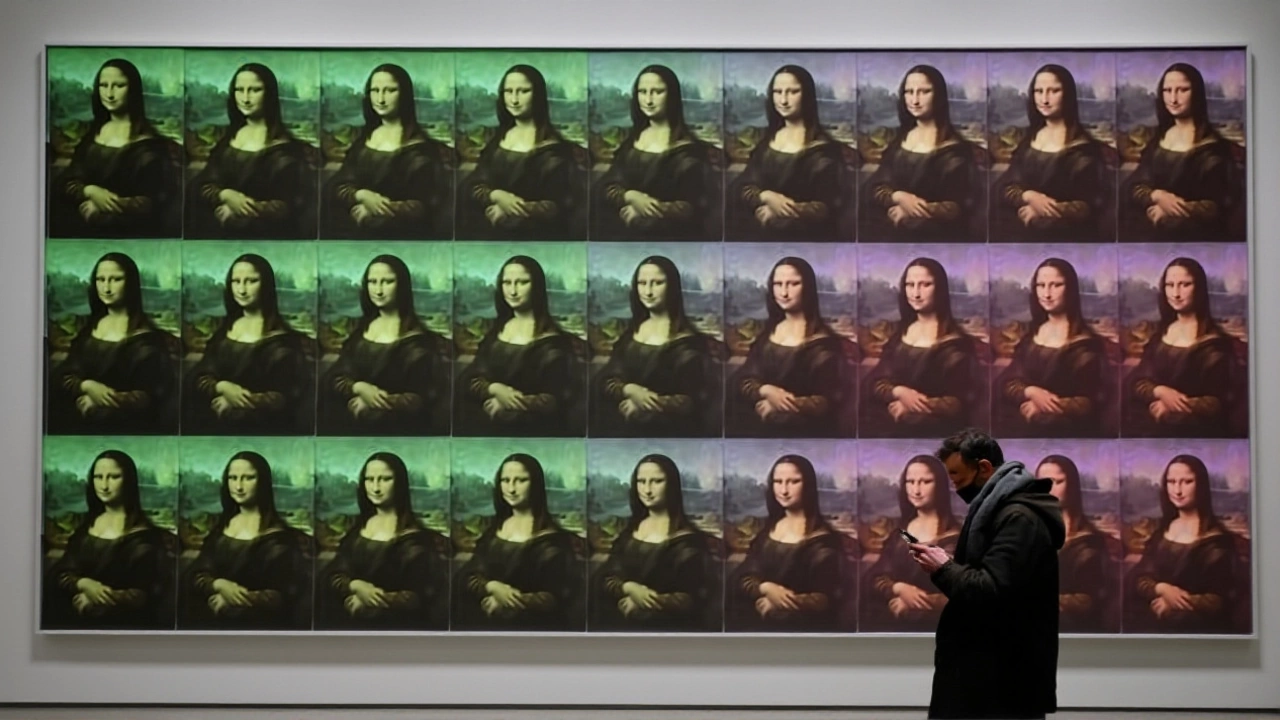When Leonardo da Vinci, Renaissance polymath created the enigmatic portrait that millions still stare at, scientists have uncovered a hidden mineral secret. The breakthrough, announced in the Journal of the American Chemical Society on October 18, 2023, shows that a rare compound called plumbonacrite sits in the paint layers of the Mona Lisa. The research was led by Victor Gonzalez, a chemist at the French National Centre for Scientific Research (CNRS) in Paris. Using synchrotron facilities such as the European Synchrotron Radiation Facility in Grenoble, Gonzalez’s team examined a microscopic fragment from the Musée du Louvre where the painting has hung since 1797.
How the Discovery Unfolded
It all started with a tiny paint chip lifted from the hidden ground layer in the upper‑right corner of the portrait – a spot that is normally concealed by the frame. The fragment, no bigger than a grain of sand, was embedded in resin for microscopy and also placed in a glass capillary for high‑resolution X‑ray powder diffraction.
“We were looking for any trace of lead because Leonardo’s notebooks mention ‘litharge,’” Gonzalez told the Associated Press in an interview on October 17, 2023. “What we found was far more complex – a whole suite of lead‑based minerals that had never been reported in a Renaissance work.”
The synchrotron beam at ESRF produced a diffraction pattern so clear that the team could differentiate between α‑PbO (litharge), β‑PbO (massicot), and the newly identified plumbonacrite, a lead carbonate‑oxy‑hydroxide. The same techniques later confirmed the presence of shannonite (Pb₂OCO₃) in a fragment from Leonardo’s The Last Supper, marking the first time that mineral has been seen in any historic artwork.
What the Chemistry Reveals
Plumbonacrite forms when lead oxide reacts with carbon dioxide and moisture over time. Its orange‑brown hue can be mistaken for dried lead pigment, but under the microscope its crystalline structure is unmistakable. The scientists argue that Leonardo mixed lead oxide powder with linseed or walnut oil, then heated the paste to create a thicker, faster‑drying medium.
This technique would have given him the ability to model the soft gradations – the famous “sfumato” – that make the smile so elusive. The discovery also explains why early X‑ray images of the Mona Lisa show faint shadows where the paint dried unevenly; the lead‑rich layer would have absorbed radiation differently than the surrounding pigments.
Besides plumbonacrite, the analysis uncovered litharge, massicot, and shannonite. The latter is especially intriguing because it requires a specific carbonate environment, suggesting Leonardo may have experimented with ground materials sourced from limestone deposits near Milan.
Reactions from the Art World
Curators at the Louvre were quick to weigh in. Jean‑Pierre Rohou, chief conservator of paintings, said, “The chemistry confirms what we’ve long suspected – Leonardo was a chemist before the word existed. Knowing the exact composition helps us fine‑tune humidity controls in the Salle des États.”
Artists’ societies in Florence expressed admiration. “It’s a reminder that the boundaries between art and science were porous in the 16th century,” noted Isabella Conti, director of the Uffizi’s research department. In Madrid, the Prado Museum’s technical team highlighted how their own infrared reflectograms of a copy of the Mona Lisa match the changes seen in the Louvre’s original, reinforcing the idea that Leonardo’s studio operated with a shared material vocabulary.
Implications for Conservation
Lead‑based pigments are notoriously unstable. Over centuries they can oxidize, darken, or even flake off. By pinpointing plumbonacrite as a constituent, conservators can now monitor the paint’s micro‑environment more precisely, adjusting temperature and CO₂ levels to slow any further mineral transformation.
Furthermore, the find may inform future restoration decisions. “If we ever need to retouch a lost pigment, we now have a chemical recipe that Leonardo actually used,” Rohou explained. The data could also guide the creation of synthetic “Leonardo‑match” paints for future scholarly reproductions.
Historical Context and Future Research
The discovery dovetails with earlier archival work. In 2005, a Heidelberg scholar unearthed a marginal note dated 1503, penned by Agostino Vespucci, which names Lisa Gherardini as the sitter. The chemical evidence now adds a material layer to that documentary proof.
Looking ahead, the CNRS team plans to scan other Leonardo works, including the Annunciation in the Uffizi and the unfinished Adoration of the Magi in the Uffizi’s laboratory. Their goal: to map a “chemical fingerprint” of the master’s workshop across Italy and France.
Meanwhile, the European Synchrotron Radiation Facility is scheduling a dedicated beam‑time slot for art‑science collaborations, hoping to make such analyses a routine part of museum conservation strategies.
Frequently Asked Questions
How does the plumbonacrite finding affect the Mona Lisa’s appearance?
The mineral itself is invisible to the naked eye, but its presence explains the subtle tonal shifts Leonardo achieved. Understanding it helps conservators keep the painting’s surface stable, ensuring the smile looks the same for future generations.
Why is lead oxide significant in Renaissance painting?
Lead oxide, or litharge, speeds up drying and creates a glossy finish. Leonardo’s use of it—combined with heat‑treatment—gave him a medium that could hold fine glazes without cracking, a prized advantage in the era’s oil‑painting techniques.
What does the discovery mean for other Leonardo works?
It suggests Leonardo’s studio routinely experimented with lead‑based compounds. Future studies of the Last Supper, the Annunciation, and sketches may reveal similar mineral signatures, deepening our grasp of his material repertoire.
Are there health risks associated with the mineral?
Plumbonacrite contains lead, which is toxic if inhaled or ingested. In the painting it is locked within the layers, posing no danger to viewers, but conservators wear protective gear when sampling or cleaning the surface.
Will this affect the Louvre’s visitor experience?
Not directly. The museum’s lighting and climate controls will be fine‑tuned, but the display remains unchanged. Visitors will still see the same 77 × 53 cm poplar panel that draws roughly 10 million eyes each year.

